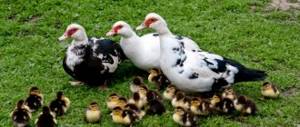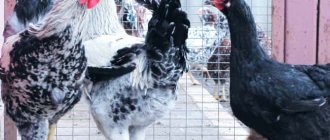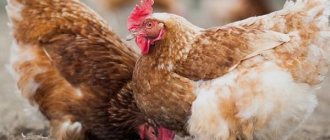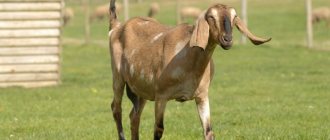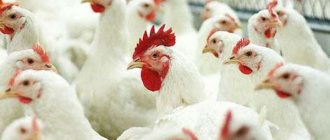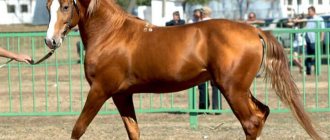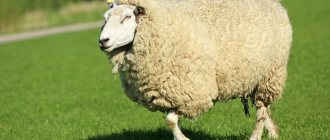Description and characteristics of the broiler
Broiler chickens have productive advantages over conventional breeds, and also differ in appearance.
Exterior and color
The Sasso bird is characterized by a unique appearance: a strong, low-slung body, a wide chest and a small head. The sasso broiler has small earrings and a comb, and a medium-sized, light-colored beak. Relatively short wings. The original combination of multi-colored plumage with yellow paws and dark sand-colored skin sets Sasso chickens apart from other birds.
Common plumage palettes for colored broilers: brick red, black, fawn. A stiff feather grows densely.
Productive qualities
Naturally, it is the productive characteristics that determine the demand for individual breeds.
Weight and maturation
The advantage of the Sasso bird is its rapid growth and weight gain. Good care provides the chicks with a daily weight gain of about 60 g. Therefore, after 8-9 weeks, the chicks gain weight of about 2 kg. Adult hens grow to weigh about 4 kg, and roosters can weigh 6-7 kg.
Meat
A tender and juicy structure is a feature of Sasso chicken meat. Therefore, it is a suitable product for preparing dietary dishes.
Eggs
Typically, broiler chickens cannot boast of egg production. If the bird is provided with adequate nutrition and proper care, then 120-150 eggs can be collected per year. At the same time, it is necessary to take into account the nuance of the breed - the first clutch of chickens will not please poultry farmers soon. The chicken begins to actively lay eggs at the age of 6-8 months, although some individuals can lay eggs after 11-12 months.
Character specifics
The bird has an easy-going character. Although the ancestors of the Sasso were from fighting breeds, modern broilers are not prone to aggression. Sometimes timidity is observed, which can negatively affect the egg production of chickens. Since the Sasso breed is bred primarily for meat, shyness does not create problems during cultivation.
See also
Characteristics and description of the Adler Silver breed of chickens, their contentsRead
Feeding
Chickens of meat breeds and crosses must be fed in plenty, however, they should not be overfed - otherwise, an excessive layer of fat may accumulate in the subcutaneous layer of chickens. Be sure to use vitamin complexes and calcium supplements.
Shell as a mineral supplement for chickens. What is the benefit, at what age and in what form can it be given? Look
Can broilers be given sand? More details
Chalk as a feed additive for chickens - why is it needed? Read
Feeding chickens with barley: can it be given to broilers? More details
Using whey as a source of animal protein Read
Eggshells in the diet of chickens and chickens. How to give correctly? More details
How to give fish oil to chickens, layers and broilers? Look
Feed tricalcium phosphate for adult chickens, chicks and broilers More
The basis of the diet can be ready-made specialized feed or homemade mixtures, including corn, wheat, oats, and cake. Be sure to include dairy products in the menu: cottage cheese, buttermilk, warm milk.
Particular attention should be paid to feeding young animals, especially in the first month of their life. In addition to the main feed, the chickens' diet should include crushed oats, millet, boiled eggs
- Stern
- Recipes
- Supplements
Compound feed pk-1
Description of food for egg breeds. Instructions for feeding laying hens Read
Compound feed pk-2 and pk-3
Mineral and vitamin compositions, feeding standards Read
Compound feed pk-4
Used to feed laying hens aged 15-17 weeks Read
Compound feed pk-5
Composition and instructions for feeding broiler chickens Read
Purina Pro
Important differences from the previous line, application patterns Start, Growth, Finish Read
Germination and steaming of barley and wheat for chickens: how to do it correctly and how to give it to laying hens
Wheat for broilers
Rules for feeding broiler chickens with wheat. Dosage for chickens from the second day of life and adult birds Read
Mash
Making mash for broilers at home Read
Rice and buckwheat
How and in what form you can use rice and buckwheat to feed chickens. Standards for adult birds and chickens Read
Bread
What kind of bread can you feed chickens and how to do it correctly Read
Fish
The product is given in limited quantities: overfeeding can cause serious harm to the bird Read
Chalk
Chalk as a food additive for chicken feed. Feeding standards for chickens, young animals and laying hens Read
Meat and bone meal
Meat and bone meal is a mandatory additive for feeding chickens, containing protein and fats of animal origin Read
Fish fat
How to give fish oil to chickens, layers and broilers. What are the benefits of the drug and are there any contraindications Read
Limestone
Limestone (dolomite) flour in the diet of chickens. Advantage over chalk and feed shell Read
Salt
Daily dosage of salt for adult birds and young animals and cases of unwanted use Read
Advantages and disadvantages of chickens
The Sasso broiler breed is very popular among poultry farmers due to several advantages:
- strong immunity provides resistance to common avian infectious diseases;
- young animals show a good survival rate;
- affordable price of chickens (chicks several days old can be purchased for 75-85 rubles).
The main disadvantage of the Sasso breed is its sensitivity to grooming. Poorly maintained birds not only reduce their productivity, but can also become ill.
Sasso breed of colored broiler chickens
Origin story.
As you already understand, the chicken in question was born in the vastness of France, where the taste of meat is highly valued. The local breeders wanted to breed a layer that would become a worthy alternative to broilers. Thanks to long-term work, another quota appeared in the world about 35 years ago.
Sasso chicken XL551 and T751, unfortunately, is not widespread outside the country, but, nevertheless, has become one of the most popular in its homeland. Today, of course, farmers all over the world grow it, but according to statistics, its population outside of France is not numerous. It is also known that chicken is popular in Asian countries.
The Sasso breed of chickens belongs to the meat production type. This is a unique species, which is famous not only for its delicious meat, but also for its unrealistic growth rates, without hormones or any additives.
Subtleties of keeping and caring for Sasso chickens
French breeders are constantly working to improve the characteristics of the breed. Sasso broilers adapt well to any climatic conditions.
In a poultry house with a walk
A spacious walking yard guarantees optimal conditions for the development of chickens. There is no need to create a high fence around the perimeter of the site. A bird with short wings and a massive carcass is simply not capable of flying over the fence. When arranging a patio, it is necessary to build a canopy in the corner so that the bird can take shelter during the rain.
In cells
To grow in cages, it is not necessary to create special conditions for Sasso broilers. To save space, the cages are installed in 3 tiers. The number of livestock in a cage depends on the age of the chickens. Basic measures for caring for chickens: regular replacement of litter, regular disinfection of cages. To provide natural protection against parasites, ash baths are periodically organized for the birds.
What to feed broilers?
Before starting feeding, the young animals must be given a 1% solution of potassium permanganate to drink. To do this, dilute 1 g of potassium permanganate crystals in 100 ml of hot boiled water. Water temperature 40 C.
The color should be pale pink. The solution is cooled to 16 C and must be filtered so that the crystals do not enter the esophagus of the chicken. Soldering is carried out using a pipette or syringe.
After 3-5 hours, the young animals are given the pre-start version of the feed. It can be diluted with skim milk. Wet mash is better absorbed by the body. The first portion is 15 g. Skim milk is 5 ml/head. The pre-start mixture is given for the first 5 days, increasing the portion to 22 g.
Planned herd replacement
When updating the livestock, it is taken into account that the Sasso chicken breed is bred mainly for meat. Broilers aged 2 months are sent for slaughter. It is not rational to keep older chickens - costs rise, and weight gain slows down.
Of course, there are subspecies of the Sasso breed that gain weight at a moderate rate. The egg production of such chickens pays for the costs of their maintenance. When breeding such laying hens, it is necessary to take into account that 2 years is the most productive period of a bird’s life.
How to grow Sasso?
Broilers are unpretentious, but in order for them to rapidly gain weight and develop properly, they need to be provided with certain conditions.
Meat birds are very sensitive to poor care. And often all problems and illnesses are associated with poor content.
In order for Sasso birds to grow healthy, it is important:
- Monitor the temperature. The chicken coop should be warm. The optimal temperature is +18 degrees.
- Provide access to fresh air. For this purpose, a high-quality ventilation system is equipped. We must remember that drafts can cause serious illness in animals.
- For floor-type housing, it is necessary to ensure the cleanliness and dryness of the litter.
- Create a complete and balanced diet.
- Regularly release livestock outside. Some inexperienced breeders wonder why broilers peck the ground while walking, and whether they should be allowed to do this. While pecking at the ground, birds eat worms, beetles, and green grass. Such food only benefits domestic birds.
The advantage of the Sasso cross is that for intensive weight gain you can use not only ready-made factory kits, but also homemade mash, grain and other products. Chalk, fish, table waste, shell rock, and dairy products are considered good vitamin supplements for them.
Diseases and prevention
The advantage of Sasso poultry is its resistance to disease. Of course, this condition is met with regular bird care. If the farm contains a significant number of chickens, it is recommended to periodically use antibiotics. This measure will prevent the outbreak and spread of infectious diseases. Suitable growing conditions, fresh food and regular maintenance are the requirements for breeding sasso boilers. The main thing is that the breed demonstrates productivity at an average cost of input.
How to hatch a broiler hatching egg
The farm must have representatives of the original breeds. A good combination is Cornish roosters and White Plymouth rock hens.
The best crosses are 4-line, that is, they first cross two breeds. When the chickens grow up, females from one group are crossed with males from another, and broilers are hatched from the resulting eggs. But for a private farmstead it is better to buy day-old chicks.
First steps when breeding broilers
The basis for obtaining healthy offspring is competent preparation of the parent herd.
- Healthy, young and active chickens are allowed for breeding.
- The optimal ratio of individuals is 1 rooster per 11 hens.
- The best age for parents is 8-13 months.
Maintenance and care of the parent flock
During the breeding season, breeding individuals receive increased attention:
- The chicken coop is equipped with ventilation for a constant flow of fresh air.
- It is better to fix the drinking bowls on the wall, raising them above the floor, so that the chickens do not spill water. Bacteria, mold and fungi develop in damp litter.
- When soiled, add a layer of fresh litter.
- You need to make sure that chickens lay eggs in nests and not on the floor.
- Feed is given at the same time. It must be fresh and of high quality.
- The poultry house is regularly cleaned and disinfected.
- Before laying begins, the herd is vaccinated against major infections. If you neglect vaccinations, you can lose your entire livestock overnight.
Collection and storage of eggs
Eggs are collected daily and stored under special conditions:
- dry room;
- temperature 15-18 degrees;
- no changes in temperature and humidity to avoid the appearance of condensation on the shell.
The shelf life of hatching eggs is 9-10 days. Each day of storage increases the incubation period by 1 hour and reduces the percentage of hatched chicks.
Breeding laying hens
Breeding chickens at home for beginners can be quite a profitable business that will bring quality products and a good income. Increased attention is paid to poultry breeding, because it is unpretentious, and its cultivation does not require the use of any sophisticated technologies.
Highly productive chicken breeding requires an investment of money, time and effort. Only in this case will breeding and raising chickens bring profit. Therefore, next we will talk in more detail about what a novice poultry farmer needs to know about raising chickens.

